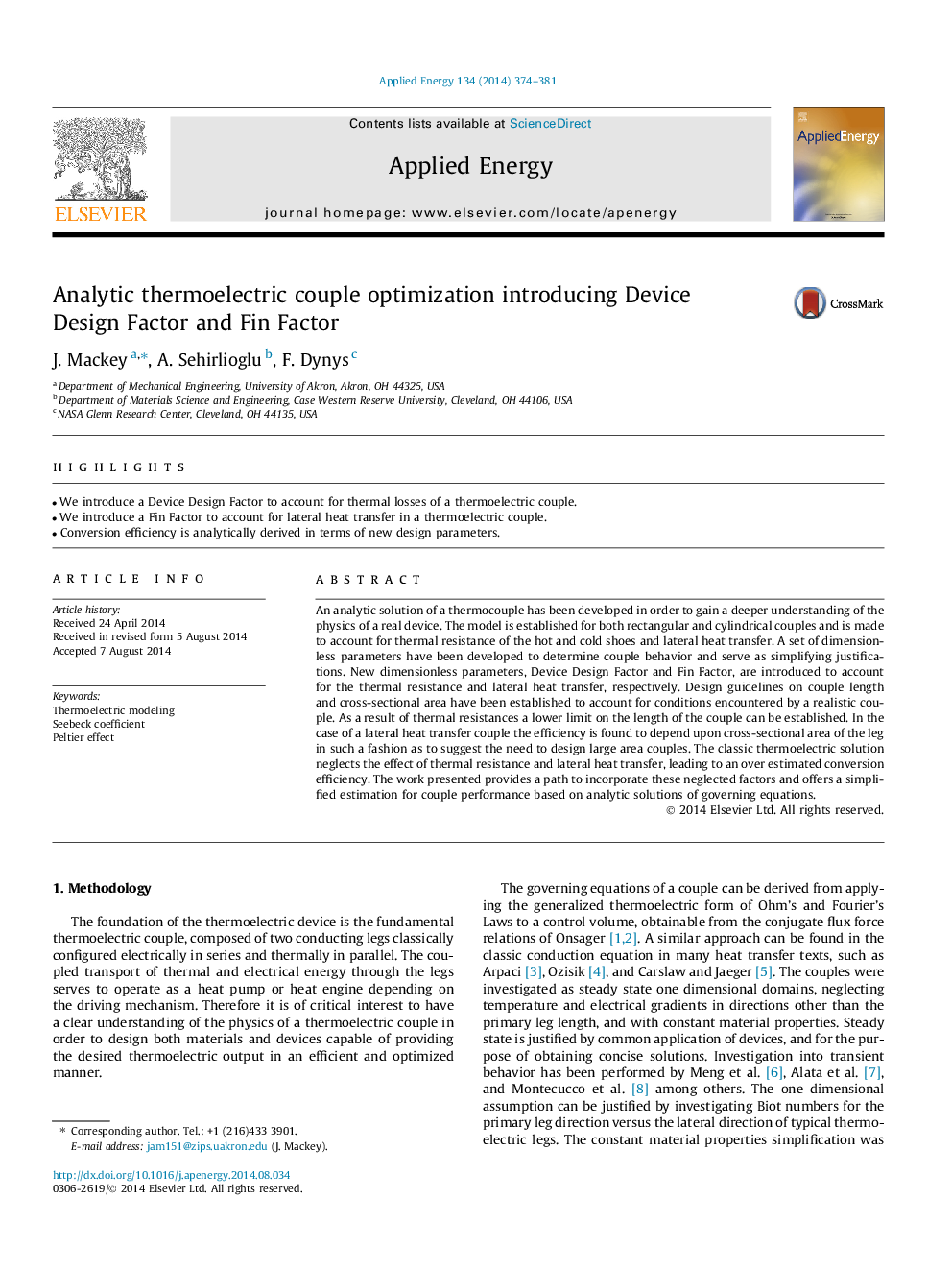| کد مقاله | کد نشریه | سال انتشار | مقاله انگلیسی | نسخه تمام متن |
|---|---|---|---|---|
| 6689638 | 501891 | 2014 | 8 صفحه PDF | دانلود رایگان |
عنوان انگلیسی مقاله ISI
Analytic thermoelectric couple optimization introducing Device Design Factor and Fin Factor
ترجمه فارسی عنوان
بهینه سازی جفت ترموالکتریک تحلیلی معرفی عامل فاکتور طراحی و فاکتور فین
دانلود مقاله + سفارش ترجمه
دانلود مقاله ISI انگلیسی
رایگان برای ایرانیان
ترجمه چکیده
یک راه حل تحلیلی از ترموکوپل برای به دست آوردن درک عمیق تر از فیزیک یک دستگاه واقعی توسعه داده شده است. این مدل برای هر دو زوج مستطیلی و استوانه ای ساخته شده است و برای ایجاد مقاومت حرارتی کفش گرم و سرد و انتقال حرارت جانبی ساخته شده است. مجموعه ای از پارامترهای بی معنی برای تعیین رفتار چندگانه ساخته شده اند و به عنوان توجیه ساده ای عمل می کنند. پارامترهای بعد بدون بعد، عامل طراحی دستگاه و فاکتور فین، به ترتیب برای تعیین مقاومت حرارتی و انتقال حرارت جانبی معرفی می شوند. دستورالعمل های طراحی در دو طول و مقطع عرضی برای تعیین شرایطی که بوسیله یک زوج واقع گرایانه مواجه می شوند ایجاد شده است. به عنوان یک نتیجه از مقاومت حرارتی، حد پایین تر از طول زوج می تواند ایجاد شود. در مورد یک زن و شوهر انتقال حرارت جانبی، کارایی بستگی به سطح مقطعی پا دارد به طوری که نیاز به طراحی زوج های بزرگ را نشان می دهد. راه حل ترموالکتریک کلاسیک از اثر مقاومت حرارتی و انتقال گرما جانبی جلوگیری می کند و منجر به راندگی تبدیل بیش از حد می شود. کار ارائه شده راه را برای ترکیب این عوامل نادیده گرفته و ارائه تخمین ساده برای عملکرد زن و شوهر بر اساس راه حل های تحلیلی معادلات حاکم است.
موضوعات مرتبط
مهندسی و علوم پایه
مهندسی انرژی
مهندسی انرژی و فناوری های برق
چکیده انگلیسی
An analytic solution of a thermocouple has been developed in order to gain a deeper understanding of the physics of a real device. The model is established for both rectangular and cylindrical couples and is made to account for thermal resistance of the hot and cold shoes and lateral heat transfer. A set of dimensionless parameters have been developed to determine couple behavior and serve as simplifying justifications. New dimensionless parameters, Device Design Factor and Fin Factor, are introduced to account for the thermal resistance and lateral heat transfer, respectively. Design guidelines on couple length and cross-sectional area have been established to account for conditions encountered by a realistic couple. As a result of thermal resistances a lower limit on the length of the couple can be established. In the case of a lateral heat transfer couple the efficiency is found to depend upon cross-sectional area of the leg in such a fashion as to suggest the need to design large area couples. The classic thermoelectric solution neglects the effect of thermal resistance and lateral heat transfer, leading to an over estimated conversion efficiency. The work presented provides a path to incorporate these neglected factors and offers a simplified estimation for couple performance based on analytic solutions of governing equations.
ناشر
Database: Elsevier - ScienceDirect (ساینس دایرکت)
Journal: Applied Energy - Volume 134, 1 December 2014, Pages 374-381
Journal: Applied Energy - Volume 134, 1 December 2014, Pages 374-381
نویسندگان
J. Mackey, A. Sehirlioglu, F. Dynys,
